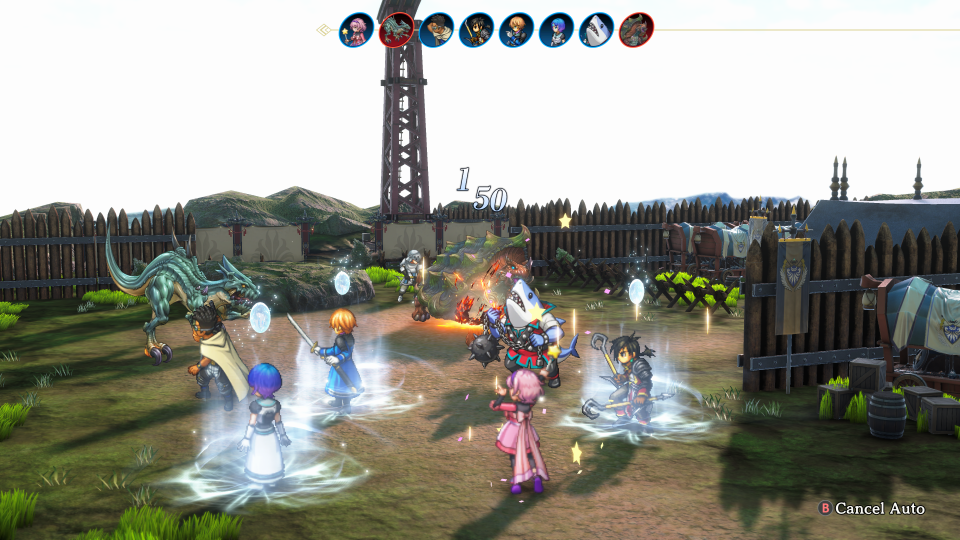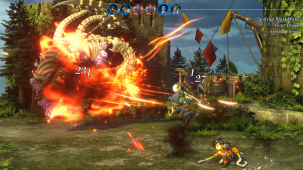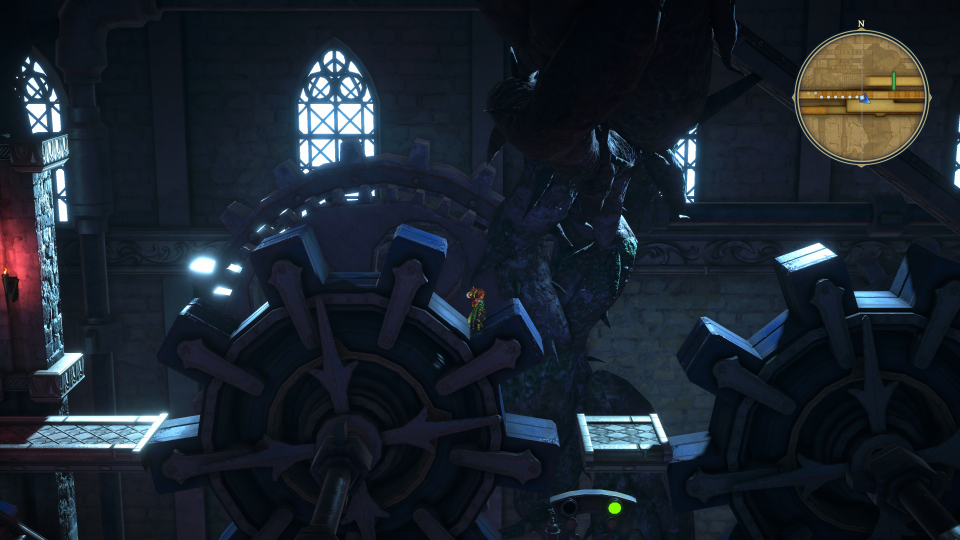Teasers
In 2020, the recently deceased designer Yoshitaka Murayama raised money via Kickstarter for a spiritual successor to his Suikoden series. Now the JRPG has been released.
Advertisement
 |
All screenshots come from GamersGlobal
In 1995 designer conceived Yoshikata Murayama The JRPG is based on the classic Chinese novel “The Robbers from Liang Shan Moor” (circa 14th century). Suikoden for Konami. Although there are now five parts of the series and numerous spin-offs (with the “most recent” offshoot appearing in 2012 and only in Japan), Suikoden is one of the lesser-known representatives of the genre, even if it now has a strong fan base in the West . Strong enough to be the game's spiritual successor, Eiyuden Chronicle – Hundred Heroesto be co-financed on Kickstarter. With great success: Over 45,000 supporters raised more than 4.5 million US dollars in a short period of time, catapulting the title to third place among the fastest and most highly funded video games on the crowdfunding platform.
Murayama, who joined Konami shortly before the release of Suikoden 3 left, also worked here as a designer and writer – the JRPG clearly shows his handwriting. Unfortunately, he was no longer able to witness the release of the game himself; he died on February 6th of this year at the age of 55 and handed over the reins Osamu Kumta.
 |
| The landscape is shown diagonally from above. A mini map shows the current position. |
Very classic – right down to random battles
As the title suggests, the 100 heroes are the program in the truest sense of the word. The story of the game is told quickly: the main protagonist is 17-year-old Nowan, who grows up in a small village. At first, the fantasy world of Allaran (whose inhabitants also include humanoid animals) is okay, but Nowan quickly becomes entangled in political power games of the local empire and various kingdoms. The antagonist is the sinister Dux Aldric, who not only wants to subjugate the world using more than questionable means, but also wants to harness the power of local magic, bundled in special lenses, for his own benefit. For his plans, Aldric doesn't shy away from murder and uses magically gifted residents for experiments. In short: The framework is set, and Nowan has to find allies over the course of the game in order to build a powerful alliance that can put Aldric in his place.
And this is where the hundred heroes come into play – Eiyuden Chronicles plays largely like a classic JRPG, but has some special game modes and peculiarities.
Advertisement
 |
| Every now and then there are battles with particularly nasty boss opponents. |
The characters are almost always 2D sprites, while the environments appear three-dimensional. As is also known from older genre representatives, you lead a group over surface maps in the iso view – the view can be rotated freely. However, you search through the numerous labyrinths and cities with your camera fixed. As was common with JPRGs in the past, monsters are not visible on the map – so random battles are the order of the day. In the battle screen, the camera is close to the action and usually looks obliquely into the depths of the room, which further emphasizes the 2.5D graphics. The figures move in turns and can attack, perform a special attack, trigger a magic spell or rummage for an item. Alternatively, you can sit back and let the computer take the wheel in auto mode. Basic commands can be set beforehand for each party member – for example, whether the character should use magic or not use any mana points. In auto mode, the party acts surprisingly well, reviving fallen comrades at the right time or healing battered comrades independently with items.
 |
| The bar at the top of the screen informs you about the turn order in battles. |
Of range and runes
After a fight you get experience points, gold and possibly a fine item – so far normal. But only at first glance – the character and combat system is much more complex than it seems at the beginning. Each character only has one weapon – this cannot be changed in the game, only upgraded.
 |
| Special attacks or spells are particularly visually impressive! |
Each figure has an attack type (depending on the weapon) and a fixed range – short, medium, long. This is important because only six characters actively take part in the battles. There are also a maximum of six opponents – three in the front and three at the back – and follow the range rules. Knights who only attack “briefly” always attack the first row. So if such a hero is in the back ranks, he is practically useless. Characters with “Medium” range can strike across a row. So if they are positioned at the back, their attacks will only reach the enemy front. Long-range combatants, on the other hand, hit everyone. A suitable composition and the correct position or order are therefore not entirely unimportant.
Even if only six party members actively go into battle, a total of ten figures fit into the squad: one slot is reserved for a figure with a support effect, three others are just “participants” but not active. If you want a specific character to come along in a mission, you are free to conveniently park them in a participant slot. The disadvantage: Only the six fighters in the formation get experience points – everyone else gets nothing and may have to be brought up to the current level in order to use them sensibly! Leveling is important: On the one hand, said weapons can only be improved once the character has reached a certain level, and on the other hand, special rune slots are only gradually unlocked.
Each character has up to eight of these slots, which you can fill with runes you find or buy. They are also available in four quality levels and with different functions. Some increase base stats such as strength or speed, others allow the character to use spells from different element groups. The higher the quality, the more powerful the spell. In short: the more runes a character can receive, the better and more versatile!
 |
| There are a large number of small puzzles in dungeons: Here the gears have to turn in the right direction and then be used as a platform to progress. |